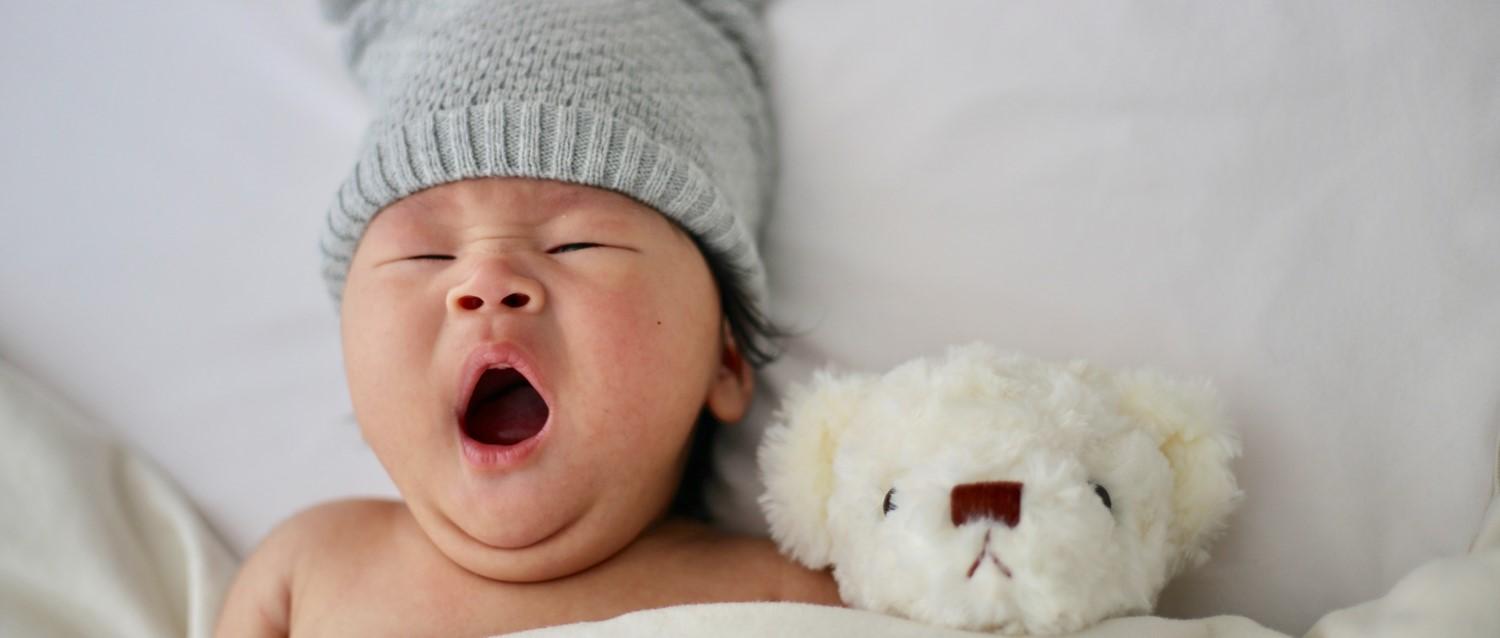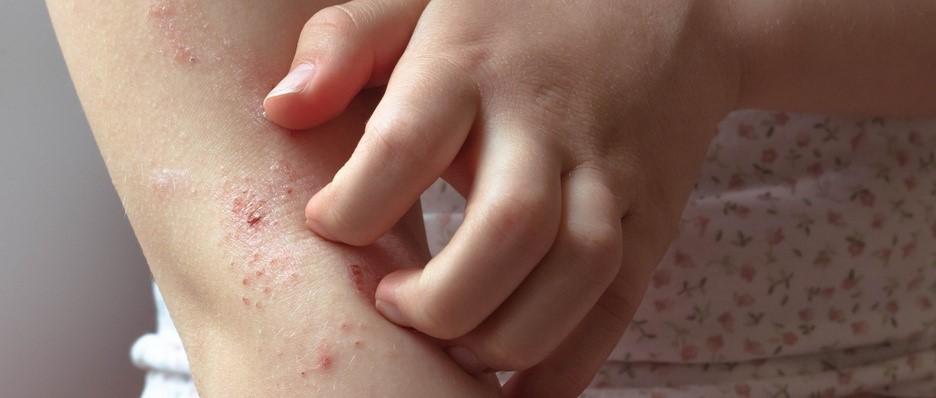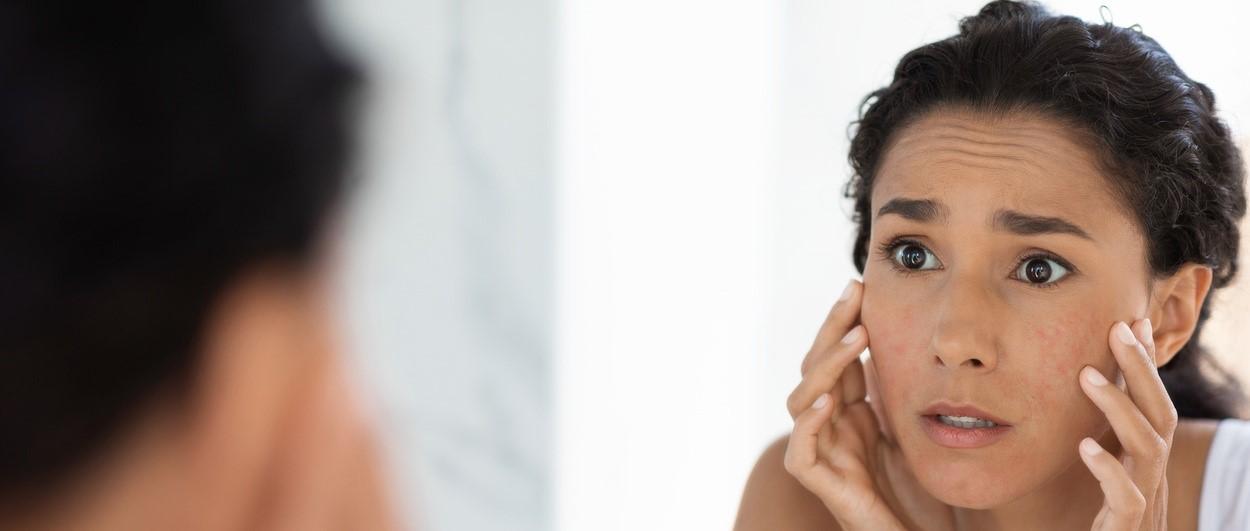
Everything you need to know about baby eczema
Peer reviewed by Dr Krishna Vakharia, MRCGPLast updated by Lydia SmithLast updated 4 May 2023
Meets Patient’s editorial guidelines
- DownloadDownload
- Share
- Language
- Discussion
Babies get all sorts of rashes and skin complaints, from nappy rash to cradle cap. Most are harmless and will disappear over time with the right care, but eczema can be a persistent problem. So what is baby eczema and how do you treat it?
In this article:
Around one in five newborn babies get eczema, a skin condition that usually appears as an itchy red or brown patch1.
Dr Derrick Phillips, consultant dermatologist and British Skin Foundation spokesperson, says eczema occurs due to an impairment of the skin barrier function affecting the ability to retain moisture, leading to dryness and irritation.
"Baby eczema typically manifests as dry, red patches on the cheeks. There may be areas of broken skin and scratch marks," he says. "The presence of yellow crusting is a sign of infection and usually requires a course of cream or oral antibiotics. Over time, the eczema may spread to other areas including the torso, hands, in front of the elbows and behind the knees. Nappy rash can also develop."
Continue reading below
Why do babies get eczema?
Eczema is a complex condition. It can be genetic, which means your baby may be more likely to have eczema if other family members have it. "It is also more common in families with a strong history of eczema, asthma, hay fever and food allergies," says Phillips.
However, eczema also involves an overactive immune response to environmental factors such as heat, soap, pollen or other irritants, which can cause flare-ups. Around half of people with eczema have an additional genetic element - a difference in a skin protein called filaggrin - which leads to further problems in the skin barrier2.
What’s the link between baby eczema and food allergies?
Food allergies can occur in any baby. Although babies with eczema have a slightly higher risk of allergy, lots of babies with eczema have no other food or cow’s milk allergies.
Cows' milk allergy, also called cows' milk protein allergy, is a common childhood food allergy. One of the symptoms of a cow’s milk protein allergy can be an itchy rash. Exposure to cow's milk may act as a trigger for eczema if a baby is allergic to it.
However, it’s possible for a child to have both a cow's milk allergy and eczema as two separate conditions that need to be treated as such. If you think your baby has a cow’s milk allergy, you should speak to your doctor.
Continue reading below
How can you manage baby eczema?
Baby eczema is often managed with a type of moisturiser called an emollient. "Emollients soothe the skin by producing an oily layer that traps water beneath, locking in moisture and repairing the skin barrier," says Phillips.
"Hot baths and soaps should be avoided as they strip natural oils away from the skin, causing further irritation," he adds.
"Bath oils and soap substitutes should be used instead. Bath oils are added to bath water, and both cleanse the skin and coat it with a film of oil trapping moisture beneath. Soap substitutes will cleanse the skin without causing dryness. They do not foam and will take some getting used to."
However, it is important to use bath oils or soap substitutes that are suitable for a baby’s skin, which is extra sensitive.
"Some cases of baby eczema will not respond to emollients alone and will need to be managed with the assistance of your family doctor or dermatologist," says Phillips. "Short courses of low potency steroid creams may be required to soothe the skin and reduce the inflammation."
Which creams or lotions are appropriate for baby eczema?
It is important to consult your dermatologist, paediatrician or family doctor before trying new products.
Ointments are heavy greasy moisturisers and are the most effective at locking in moisture and repairing the skin barrier. "These contain less water than other types of moisturiser, and as a result contain fewer preservatives. Ointments can also be used as a barrier treatment for nappy dermatitis," says Phillips.
Creams and lotions have a higher water content than ointments, Phillips explains. This means they are absorbed more rapidly and require more frequent application.
Continue reading below
Do babies grow out of eczema?
It is impossible to predict whether your baby will have eczema for life or not. Currently, there is no cure for eczema. Eczema is a long lasting (chronic) condition with periods of flare and periods of remission, and most people with a history of eczema still have problems with dry and itchy skin.
If your baby’s eczema is weepy, has a gold crust or is hot or red, the skin may be infected and they may need antibiotics.
Your doctor may refer your baby to a dermatologist if standard treatments are not working as well as they should be.
Further reading
Patient picks for Eczema

Skin, nail and hair health
Why eczema itches - and how to stop it
Itchiness is one of the most uncomfortable symptoms of eczema - and the urge to scratch can be unbearable. Itchy skin can also lead to sleep problems and make it hard to concentrate, but scratching can make the skin feel sore and lead to infections. So what can you do to ease the itchiness of eczema?
by Lydia Smith

Skin, nail and hair health
Why is my facial eczema worse in summer?
People prone to facial eczema can experience flare ups all year round, but for some, summer can bring on more bouts of irritation, red patches, and itchiness. If you find your face is affected more in the warmer months, you're probably prone to one or more of these common summertime triggers.
by Amberley Davis
Continue reading below
Article history
The information on this page is peer reviewed by qualified clinicians.
4 May 2023 | Latest version
4 May 2023 | Originally published

Ask, share, connect.
Browse discussions, ask questions, and share experiences across hundreds of health topics.

Feeling unwell?
Assess your symptoms online for free
Sign up to the Patient newsletter
Your weekly dose of clear, trustworthy health advice - written to help you feel informed, confident and in control.
By subscribing you accept our Privacy Policy. You can unsubscribe at any time. We never sell your data.